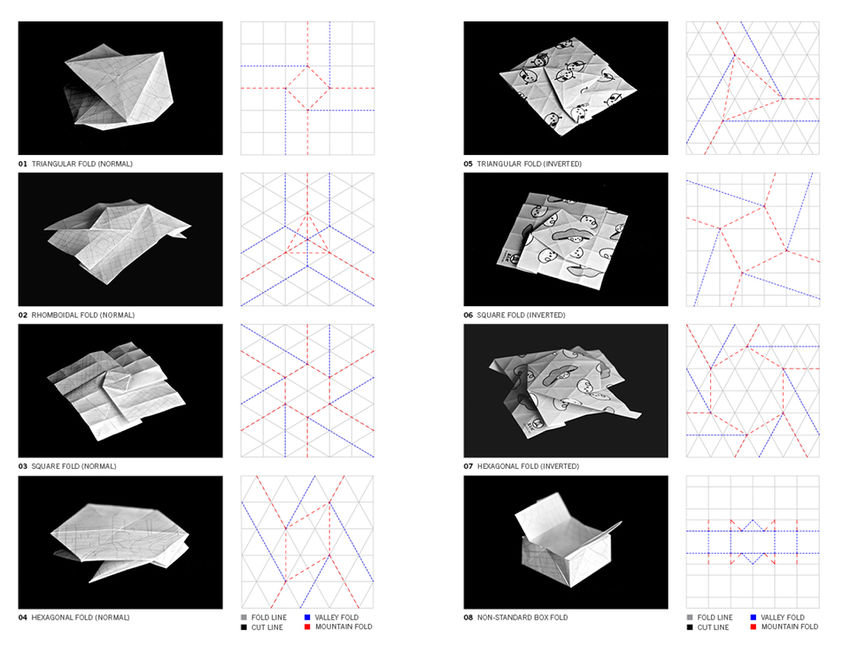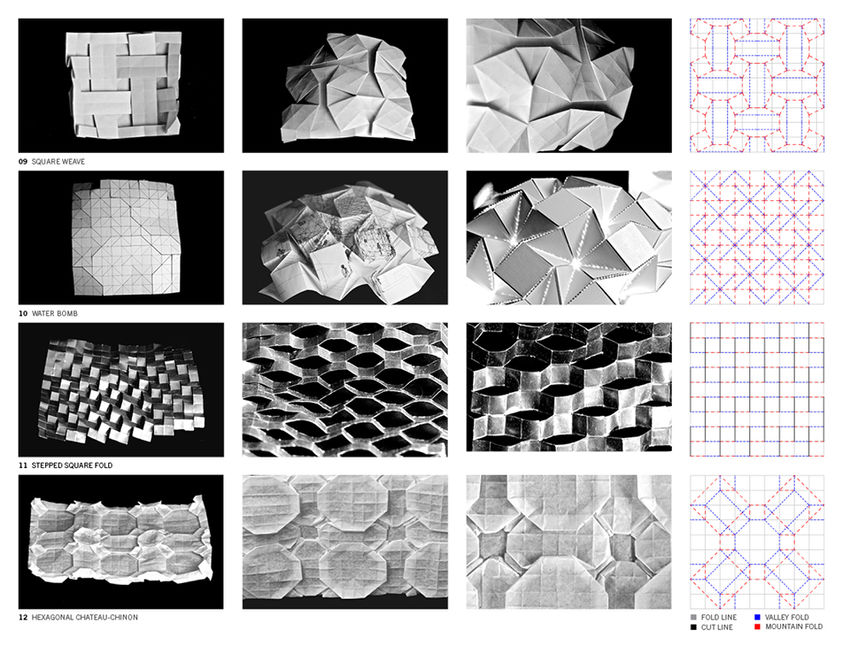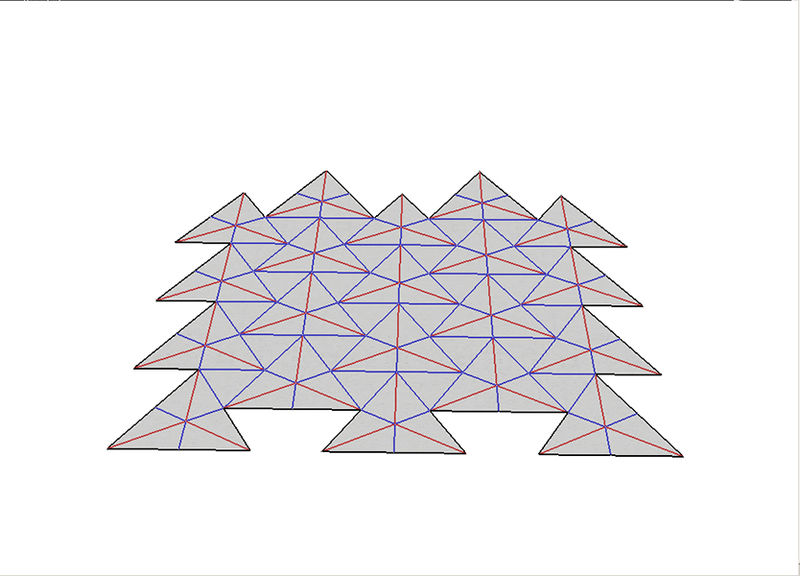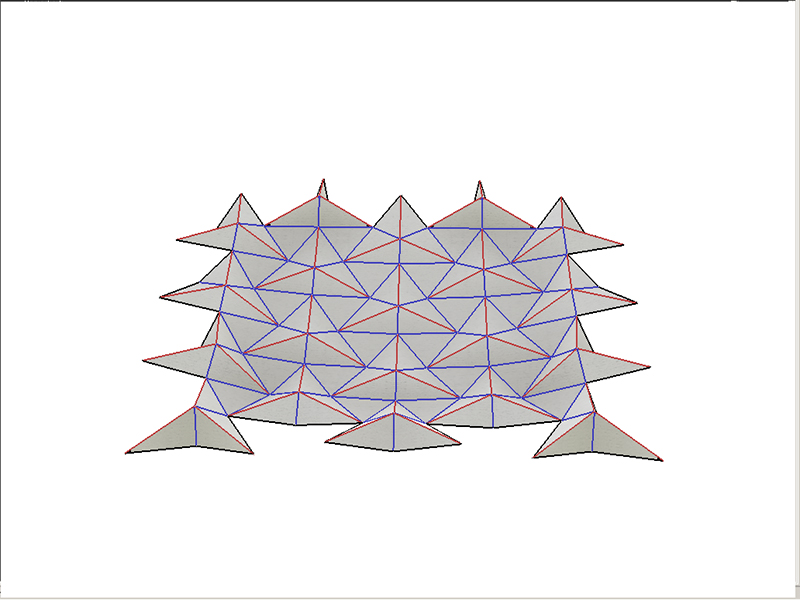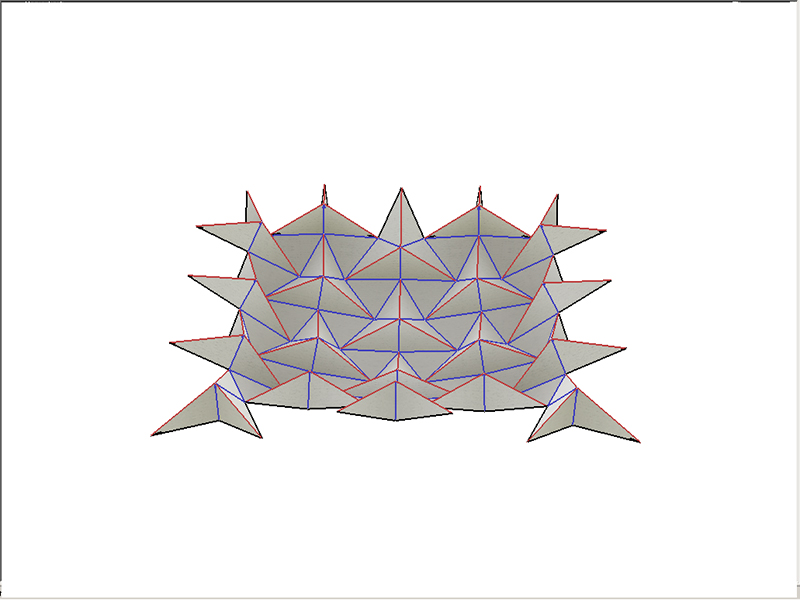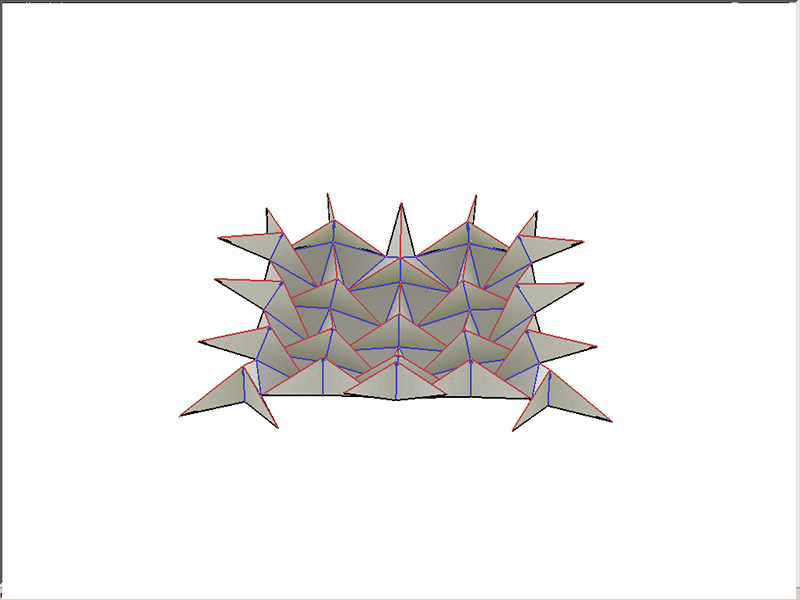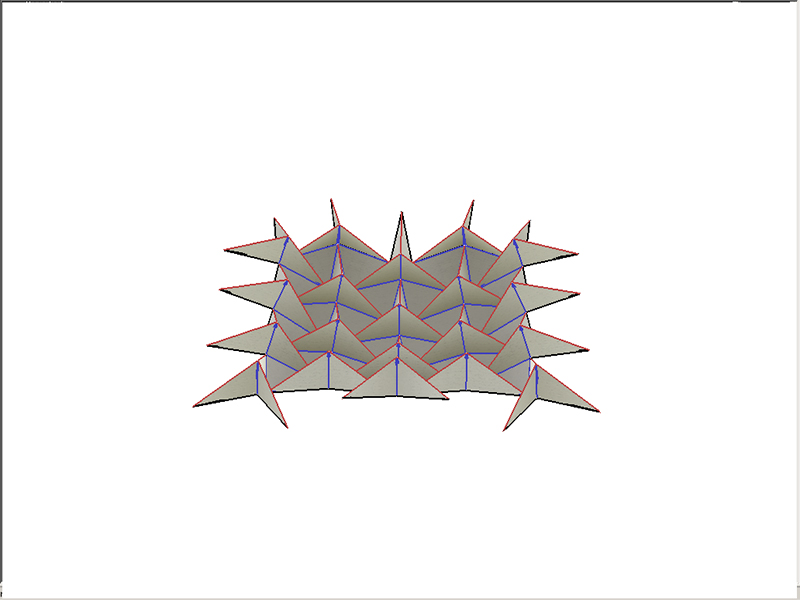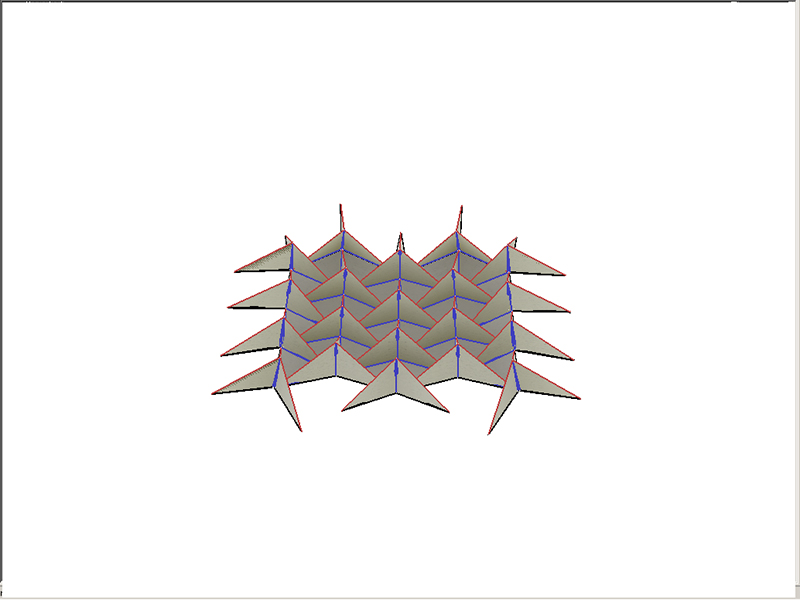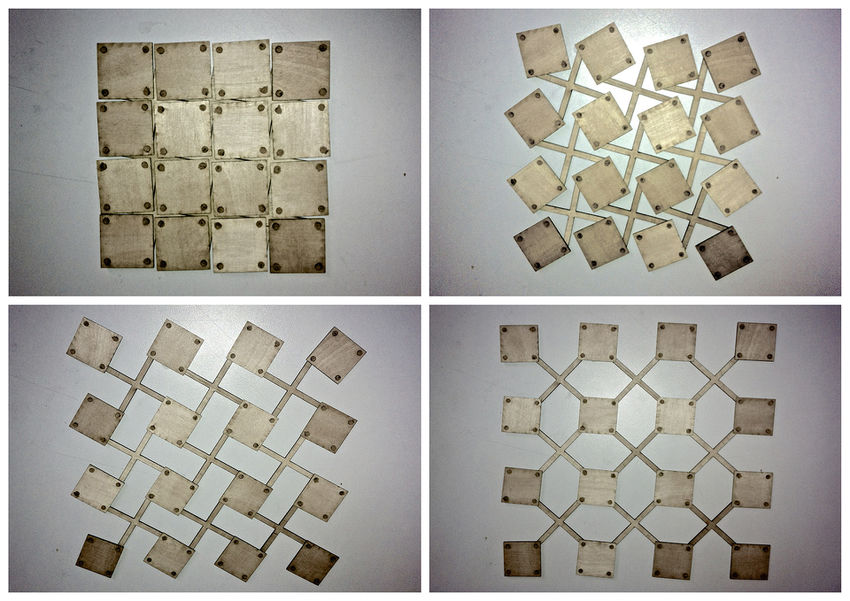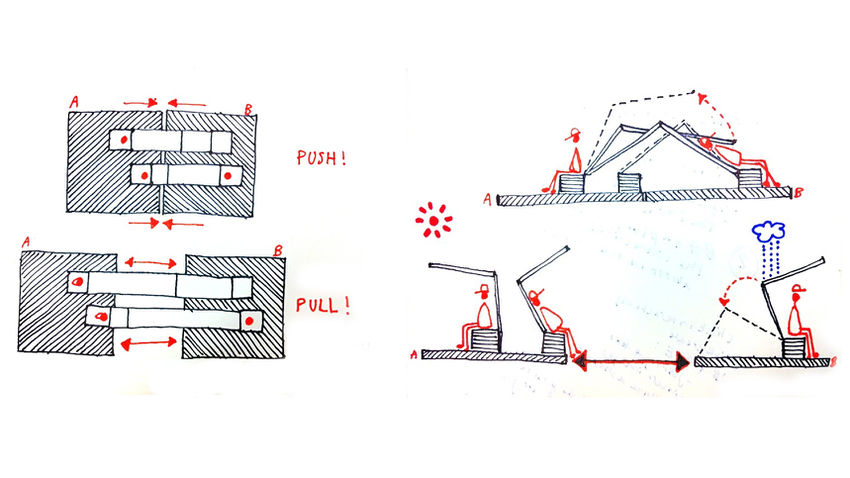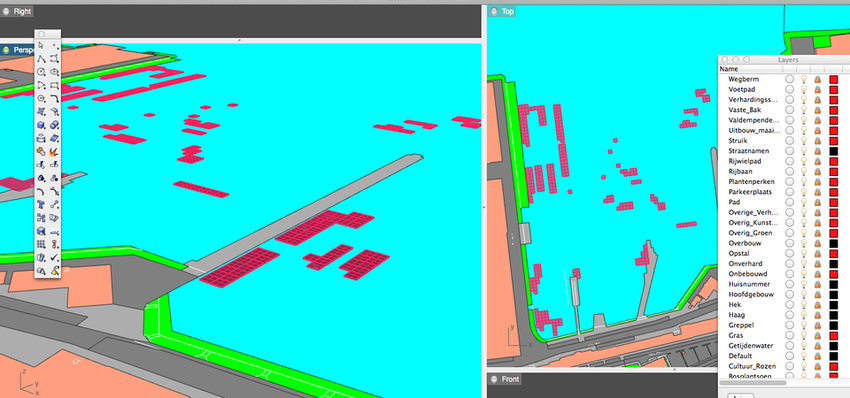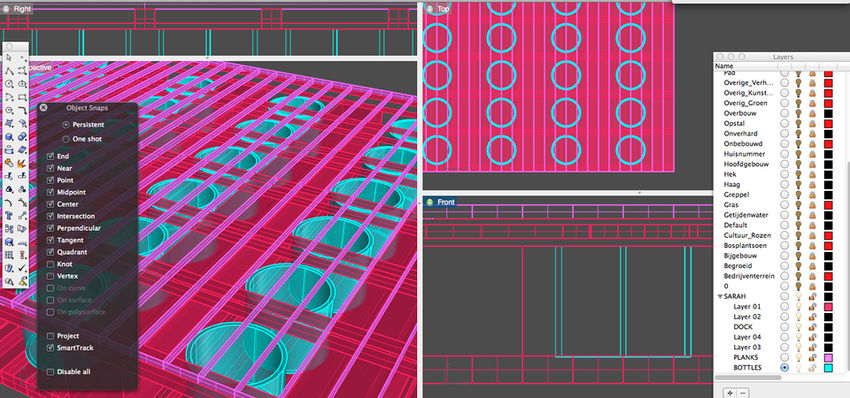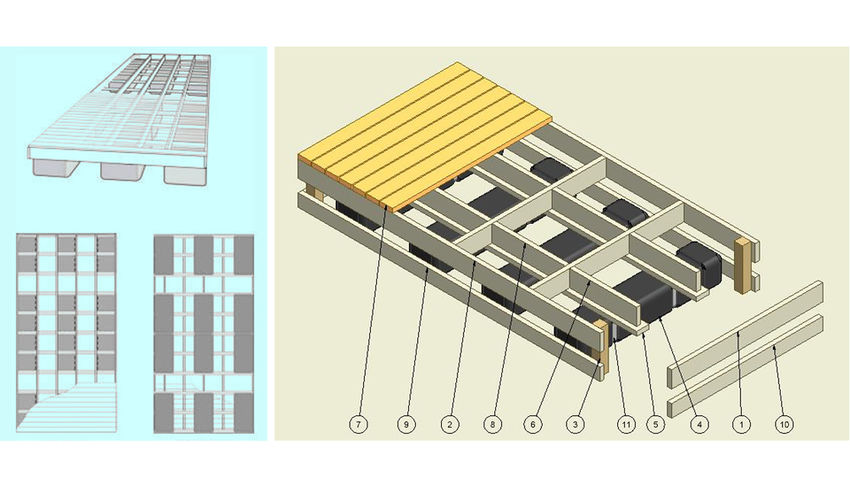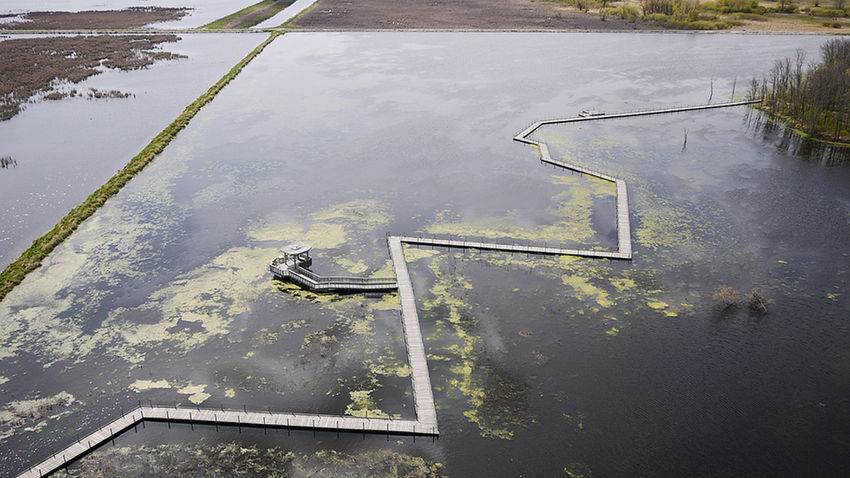project23:Styling
(→Formal Reference: Rigid Origami as Deployable Structure:) |
|||
| Line 28: | Line 28: | ||
</div> | </div> | ||
| − | |||
| − | |||
| − | |||
| − | |||
| − | |||
| − | |||
| − | |||
| − | |||
| − | |||
<div style="width: 850px; height: 400px; margin: 0; padding: 0px; overflow: hidden;"> | <div style="width: 850px; height: 400px; margin: 0; padding: 0px; overflow: hidden;"> | ||
[[File:PROJECT23_Sketch03.jpg|850px]] | [[File:PROJECT23_Sketch03.jpg|850px]] | ||
</div> | </div> | ||
| − | + | ||
== '''Island Pod Pairs''' == | == '''Island Pod Pairs''' == | ||
Revision as of 12:19, 18 January 2013
Contents |
Formal Reference: Rigid Origami as Deployable Structure:
Instead of the common folding of paper origami, rigid origami utilizes rigid (even thick) panels and hinges as a deployable system capable of continuous three-dimensional transformation. By using Tomohiro Tachi's Rigid Origami Simulator and Daniel Piker's Kangaroo plug-in in Grasshopper, folding angles between adjacent panels and specific denotation of mountain and valley fold lines (vertices) allows investigation of an optimal three-dimensional configuration. Here, calculation of kinematics and collision avoidance is enabled.
Island Pod Pairs
PUSH: When a modular pod-pair is pushed together, connective bands bend to form seating, shading, or shelter from rain.
PULL: When the pod-pair is pulled apart, the bands are flattened to create a connective bridge, or alternatively broken apart for further configurations.
Connections
LEFT: Puzzle Piece Connections. Users can build to their own taste, for their own needs.
RIGHT: Different Module, Different Funtion: 1) Bath. 2) Farm. 3) 2-Strap 4) 3-Strap
Massing Model
ISLANDS float freely and have the capacity to regroup and cluster around certain projects according to need. This massing model shows the Islands as a network of connective modules, clustered in one possible scenario. Since the islands cover a maximum surface area on the water, solar harvesting can be optimized and farm plants receive generous sun exposure.
Detail Model
The most crucial goal of the form for ISLANDS is connectivity. The aim is to connect outsiders (at sea) with insiders (on land) -- essentially, to bridge marine life with shore life. This includes sailors, students, workers, and local residents -- as reflected in the CONNECTIONS section. Therefore, the form should be modular and nest-able (or tessellated somehow). The various organizations possible for the modules (as a group) should react to any number of parameters such as water surface area / human density, project density, climate, daytime/nighttime, sunlight/shading, etc. In addition, the modules themselves could react to such parameters -- specifically, with the bend angle of the connective bands/gangways.
References
References such as sun docks, floating sauna, floating farms, and boardwalks each provide a single purpose. ISLANDS aims to cover the purposes of recreation, relaxation, sustenance, and transit by offering different module types to support each activity. For example, an RDM student may choose an ISLAND to find a dry, sheltered place to chill during lunch break. Simultaneously, a second modular form may support a floating solar farm, with maximized surface area and flexible angle toward the sun. Then another may act as a pontoon for boat repair. Meanwhile, a fourth module may transport people to all the other projects on-site and any points along the shoreline.
